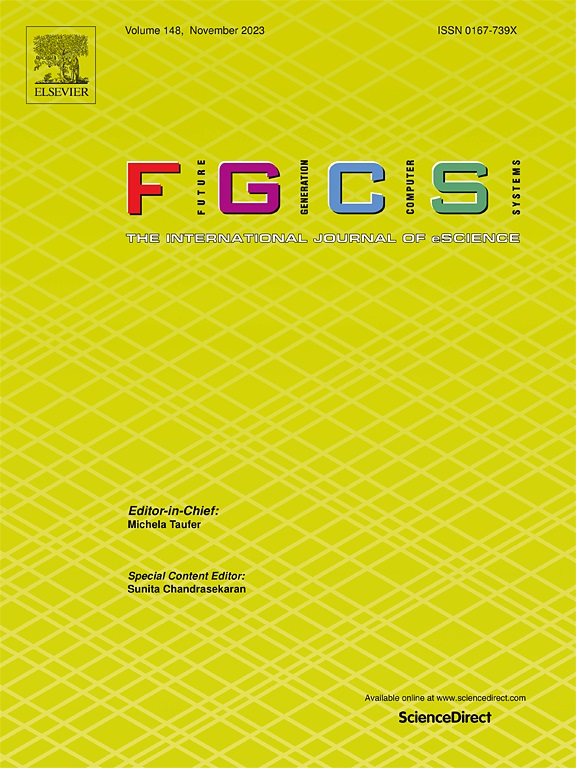RAANMF: An adaptive sequence feature representation method for predictions of protein thermostability, PPI, and drug–target interaction
IF 6.2
2区 计算机科学
Q1 COMPUTER SCIENCE, THEORY & METHODS
Future Generation Computer Systems-The International Journal of Escience
Pub Date : 2025-03-20
DOI:10.1016/j.future.2025.107819
引用次数: 0
Abstract
The effective representation of sequence is essential for analyzing protein structure and function. Sequence representation based on reduced amino acids plays an important part in protein research, as it preserves key sequence features while simplifying feature processing. However, it is a challenge to select an appropriate reduced amino acid method for various downstream analysis tasks. Developing reduced amino acid methods that can adapt to various downstream tasks is essential to promote protein-related researches. In this paper, we propose a novel reduced amino acid method based on non-negative matrix factorization (NMF) named RAANMF, which can adaptively generate the reduced amino acid schemes for different tasks. Through validating the effectiveness and universality of RAANMF on three mainstream tasks including protein thermostability prediction, protein–protein interaction prediction, and drug–target interaction prediction, the results demonstrate that the reconstructed models using RAANMF to characterize amino acid sequences can achieve comparable or superior predictive performance with greatly reduced feature dimensions compared to the original models. Moreover, the interpretability of RAANMF which is analyzed from the perspective of the non-negative matrix clustering principle helps us understand the biological significance and enhances its credibility and utility in practical applications. As a method developed from NMF, RAANMF offers a straightforward and interpretable approach for extracting latent features, and it is expected to help study the relation of protein sequence, structure and function.
RAANMF:一种用于预测蛋白质热稳定性、PPI和药物-靶标相互作用的自适应序列特征表示方法
序列的有效表示是分析蛋白质结构和功能的必要条件。基于还原氨基酸的序列表示在简化特征处理的同时保留了序列的关键特征,在蛋白质研究中起着重要的作用。然而,为各种下游分析任务选择合适的还原氨基酸方法是一个挑战。开发能够适应各种下游任务的还原氨基酸方法对于促进蛋白质相关研究至关重要。本文提出了一种新的基于非负矩阵分解(NMF)的氨基酸还原方法RAANMF,该方法可以自适应生成不同任务的氨基酸还原方案。通过验证RAANMF在蛋白质热稳定性预测、蛋白质-蛋白质相互作用预测和药物-靶点相互作用预测三个主流任务上的有效性和通用性,结果表明,使用RAANMF重构的氨基酸序列模型与原始模型相比,在特征维数大幅降低的情况下,可以达到相当或更好的预测性能。此外,从非负矩阵聚类原理的角度分析RAANMF的可解释性,有助于我们理解其生物学意义,提高其在实际应用中的可信度和实用性。RAANMF作为一种从NMF发展而来的方法,为提取潜在特征提供了一种简单、可解释的方法,有望为研究蛋白质序列、结构和功能之间的关系提供帮助。
本文章由计算机程序翻译,如有差异,请以英文原文为准。
求助全文
约1分钟内获得全文
求助全文
来源期刊
CiteScore
19.90
自引率
2.70%
发文量
376
审稿时长
10.6 months
期刊介绍:
Computing infrastructures and systems are constantly evolving, resulting in increasingly complex and collaborative scientific applications. To cope with these advancements, there is a growing need for collaborative tools that can effectively map, control, and execute these applications.
Furthermore, with the explosion of Big Data, there is a requirement for innovative methods and infrastructures to collect, analyze, and derive meaningful insights from the vast amount of data generated. This necessitates the integration of computational and storage capabilities, databases, sensors, and human collaboration.
Future Generation Computer Systems aims to pioneer advancements in distributed systems, collaborative environments, high-performance computing, and Big Data analytics. It strives to stay at the forefront of developments in grids, clouds, and the Internet of Things (IoT) to effectively address the challenges posed by these wide-area, fully distributed sensing and computing systems.

 求助内容:
求助内容: 应助结果提醒方式:
应助结果提醒方式:


